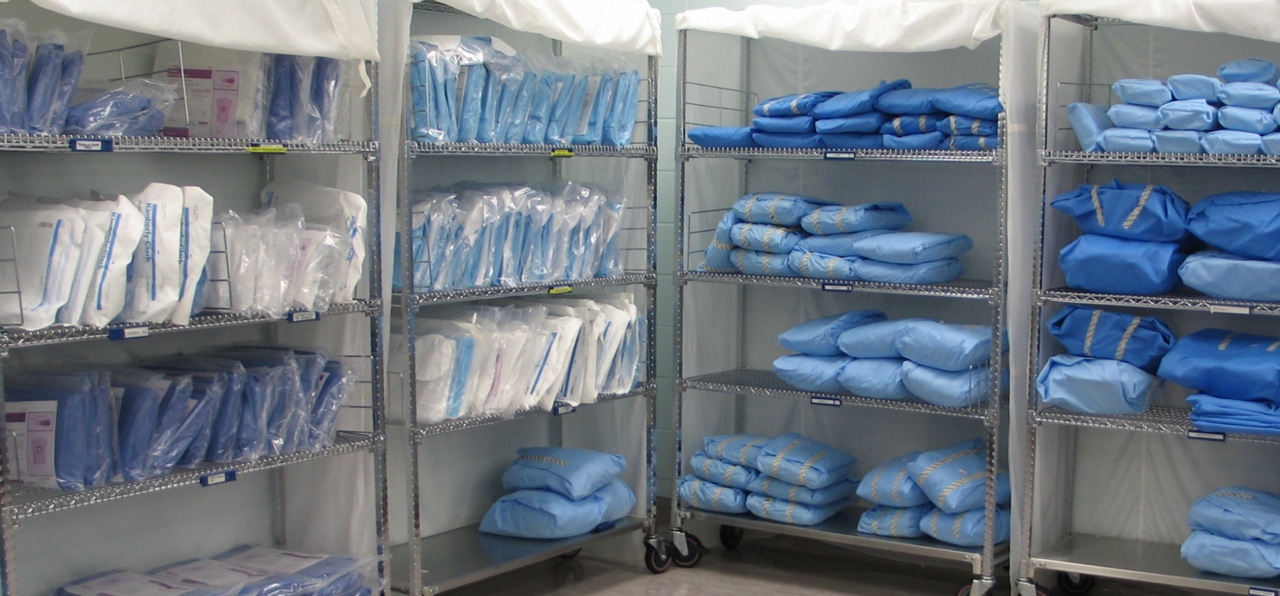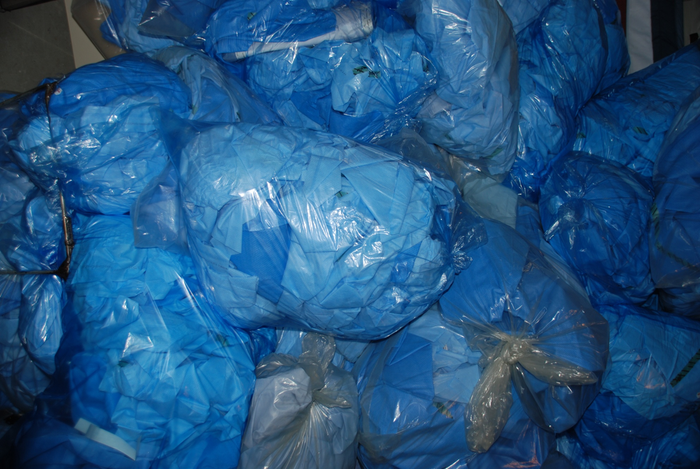How Waste Management Innovators are Capitalizing on Healthcare Materials
Some companies are helping turn hospital discards into new products.

U.S. hospitals are increasingly under fire to divert the 5.9 million tons of waste they generate each year, but most continues to be landfilled or incinerated, according to nonprofit Practice Greenhealth. One big problem is recyclers are often reluctant to take it, finding it difficult to deal with or to market. It’s hard to find a chain of players to consolidate high volumes of materials and create a quality feedstock. The problems lie with waste coming directly from medical supply manufacturing, too.
A few waste management innovators are moving and capitalizing on the materials. A handful of companies have become the “middle man” between manufacturers and hospitals, seeing that hospital discards are made into new products and returned to them. There are evolving infrastructures to collect and market volumes of these specialty commodities that can’t be collected via a single stream system. And some collectors are backhauling and warehousing materials until they have enough to make it worthwhile for recyclers to come get them.
“Notoriously, haulers don’t offer recycling programs to hospitals in tough markets, such as what we are facing now,” says Dan Constant, president of Sustainable Solutions, a Shepherdstown, W.Va.-based waste management and natural resources consulting firm. “There is so much inventory that they chose to pick up what’s cleanest, and hospital waste may have materials like paper and bottles mixed in.”
Sustainable Solutions helps Halyard Health, manufacturers of medical supplies, to see that hospitals recycle operating room waste. Constant buys material from a collector who backhauls from the hospital to its warehouse and then Constant arranges for recyclers to do pickups.
“We do it this way because hospitals don’t have space to hold waste, but these companies will bale it and hold it for a month or two. They may be a document destruction company, waste hauler or uniform company already doing business at hospitals,” he says. “Instead of 200 pounds, the recycler picks up 5,000 to 6,000 pounds at a time.”

Sustainable Solutions has materials made into a resin and sells it to a molding company that makes it into products that are sold to hospitals through their established group purchasing distribution processes.
The company helps manage about 4 million pounds annually of hospital waste and saves the healthcare industry about $28,000 a year in disposal costs, according to Constant, who says the recycler and molding company are turning a profit.
For the past five years, Casella Waste Systems has focused on large customers, including sizable healthcare providers that are looking for partners to help them affordably advance resource recovery.
“A lot of hospitals are focused on diverting and recovering healthcare plastics, and these materials are sometimes high in volume but low in weight,” says Liza Casella, director of development at Casella. “The challenge is in aggregating enough volume and weight to economically ship enough material to market.”
The company engages in aggregation recovery collaboratives, which create infrastructure geared to getting large amounts of specialty commodities, like mixed medical plastics, to market.
“These are materials like Blue Wrap and other films with value that can’t be collected in a single stream system. So, we aggregate from similar institutions and consolidate in one facility. We sort if necessary, and aggregate from many generation points, baling and shipping to markets that make it into something else,” says Casella.
ACI Plastics grinds postindustrial syringes (unused by consumers) at its Nebraska plant, where it also separates stainless steel to capture a clean plastic stream.
“Some syringes are just polypropylene (PP), and we can grind and sell it as is to plastics markets. But most products have mixtures of materials, and we have to send them to our Flint, Mich., operation to separate them,” says Bill McCaffrey, COO of ACI Plastics.
When it has to be separated, it’s sorted by weight through density separation technology. Optical sorters separate by color, and electrostatic sorters separate by positive and negative charges in plastic.
ACI Plastics has also combined PP in insulin syringes with chrome rubber and has extruded pellets of these materials that it sells to manufacturers, for instance, to be used to make underground storage tanks.
In other cases, purified materials are sold to plastic material brokers and used across many industries such as the automotive industry.
“Some materials are easier to purify and others require more technologies. But you can get most of them clean enough to sell. It’s just a matter of whether it’s economically efficient to do so,” says McCaffrey. “Now ,we are doing postindustrial medical materials. Postconsumer is more problematic but with greater opportunity. We may focus on that later.”
About the Author
You May Also Like




